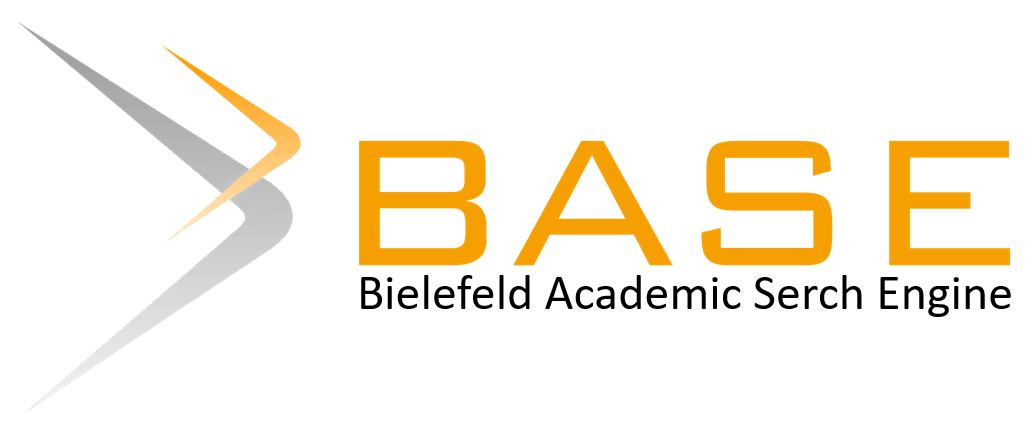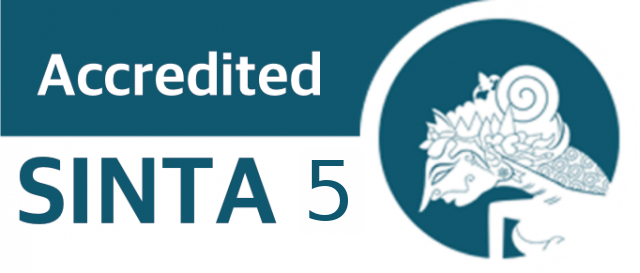Herbal and Obesity in Indonesia and Malaysia: A Bibliometric Analysis
DOI:
https://doi.org/10.30595/hmj.v7i2.24155Keywords:
Bibliometric analysis, Clinical trials, Herbal medicine, PhytochemistryAbstract
Obesity is a growing global health concern, contributing to a range of chronic diseases. Herbal treatments have gained attention as potential natural remedies for managing obesity due to their bioactive compounds. This bibliometric analysis aims to provide a comprehensive overview of the research trends, key contributors, and thematic areas in herbal treatments and obesity from 1988 to 2024. A comprehensive search was conducted in the Scopus database using a combination of keywords related to "herbal medicine" and "obesity." The search was limited to English-language publications and focused on Indonesia and Malaysia. A total of 393 documents were identified and analysed. Bibliometric indicators such as publication growth, co-authorship, citation impact, and co-occurrence of keywords were examined to reveal research trends and key contributors. Network analyses were performed to visualize keyword clusters and author collaborations.
The analysis revealed a rapid publication growth after 2010, with an annual growth rate of over 11%. The University of Malaya and the University of Gajah Mada emerged as the leading institutions in publications and citations. Co-authorship patterns highlighted high levels of international collaboration, with an average of 5.74 co-authors per paper. Keyword co-occurrence analysis identified key themes, including animal studies, phytochemistry, and human clinical trials. Research on herbal treatments for obesity is expanding rapidly, with strong collaboration and increasing citation impact. Future studies should focus on developing clinical trials, improving methodological rigor, and enhancing cross-regional collaborations to validate the efficacy of herbal remedies in diverse populations.
References
1. Alves JM, Teles RHG, Camila do Valle Gomes G, Muñoz VR, Cominetti MR, Ana Cláudia Garcia de Oliveira D. Mapping Research in the Obesity, Adipose Tissue, and MicroRNA Field: A Bibliometric Analysis. Cells. 2019;8(12):1581. https://doi.org/10.3390/cells8121581
2. Vorokhta YM. Gender-Age and Clinical-Dynamic Aspects of the Course of Depressive Disorders in Obese Patients. Експериментальна І Клінічна Медицина. 2023;92(4). https://doi.org/10.35339/ekm.2023.92.4.vzb
3. Shah B, Cost KT, Fuller A, Birken CS, Anderson LN. Sex and Gender Differences in Childhood Obesity: Contributing to the Research Agenda. BMJ Nutrition Prevention & Health. 2020;3(2):387-90. https://doi.org/10.1136/bmjnph-2020-000074
4. Ayuningtyas D, Kusuma D, Amir V, Tjandrarini DH, Andarwati P. Disparities in Obesity Rates Among Adults: Analysis of 514 Districts in Indonesia. Nutrients. 2022;14(16):3332. https://doi.org/10.3390/nu14163332
5. Chooi YC, Ding C, Magkos F. The Epidemiology of Obesity. Metabolism. 2019;92:6-10. https://doi.org/10.1016/j.metabol.2018.09.005
6. Harbuwono DS, Pramono LA, Yunir E, Subekti I. Obesity and Central Obesity in Indonesia: Evidence From a National Health Survey. Medical Journal of Indonesia. 2018;27(2):114-20. https://doi.org/10.13181/mji.v27i2.1512
7. Nugraha GI, Tahapary DL, Hidayat RW, Manikam NRM, Mas Rizky Anggun Adipurna S, Kurniawan F, et al. The Urgency in Proposing the Optimal Obesity Cutoff Value in Indonesian Population: A Narrative Review. Medicine. 2022;101(49):e32256. https://doi.org/10.1097/md.0000000000032256
8. Sulistiadi W, Kusuma D, Amir V, Tjandrarini DH, Nurjana MA. Growing Up Unequal: Disparities of Childhood Overweight and Obesity in Indonesia’s 514 Districts. Healthcare. 2023;11(9):1322. https://doi.org/10.3390/healthcare11091322
9. Oktaviani S, Mizutani M, Nishide R, Tanimura S. Prevalence of Obesity and Overweight Stratified by Age Group of the 34 Provinces in Indonesia: Local Empirical Bayesian Estimation. Asian Community Health Nursing Research. 2022:15. https://doi.org/10.29253/achnr.2021.31572
10. Delima D, Widowati L, Siswoyo H, Nurhayati, Sampurno OD, Halim FS. The Pattern of Herbal Medicine Prescribed by Medical Doctor for 10 Health Problems in Several Cities of Indonesia (Analysis of Jamu Registry 2016 and 2018 Database). 2020. https://doi.org/10.2991/ahsr.k.200215.122
11. Kidam K, Masri MF, Salleh N, Hassim MH, Adzman N, Shahlan SS, et al. HAZOP Study and Risk Reduction Strategy for Herbal Processing Industry. Journal of Energy and Safety Technology (Jest). 2018;1(2). https://doi.org/10.11113/jest.v1n2.22
12. Mohamad TAST, Islahudin F, Jasamai M, Jamal JA. Preference, Perception, and Predictors of Herbal Medicine Use Among Malay Women in Malaysia. Patient Preference and Adherence. 2019;Volume 13:1829-37. https://doi.org/10.2147/ppa.s227780
13. Arifa N, Rahayu M, Sunarti S, Rugayah R. The Utilization of Tokulo (Kleinhovia Hospita L.) as Traditional Medicine by Wawonii Community in Lampeapi Village, Wawonii Island, Southeast Sulawesi. Journal of Tropical Ethnobiology. 2021;4(2):105-10. https://doi.org/10.46359/jte.v4i2.96
14. Liu Y, Sun M, Yao H, Liu Y, Gao R. Herbal Medicine for the Treatment of Obesity: An Overview of Scientific Evidence From 2007 to 2017. Evidence-Based Complementary and Alternative Medicine. 2017;2017(1). https://doi.org/10.1155/2017/8943059
15. Pandeya PR, Lamichhane R, Lamichhane G, Lee KH, Lee HK, Rhee S-j, et al. 18KHT01, a Potent Anti-Obesity Polyherbal Formulation. Frontiers in Pharmacology. 2021;12. https://doi.org/10.3389/fphar.2021.807081
16. Park SY, Kim JE, Kang HM, Song HJ, Kang NJ, Hwang DY, et al. Adiposity Reduction by Cucumis Melo Var. Gaettongchamoe Extract in High-Fat Diet-Induced Obese Mice. Nutrients. 2023;15(15):3292. https://doi.org/10.3390/nu15153292
17. Li D, Zuo M, Hu X. Global Trends in Research of Treatment on Bladder Cancer With Chinese Medicine Monomer From 2000 to 2021: A Bibliometric Analysis. Journal of Oncology. 2022;2022:1-14. https://doi.org/10.1155/2022/3382360
18. Song Y, Zhao F. Bibliometric Analysis of Metabolic Surgery for Type 2 Diabetes: Current Status and Future Prospects. Updates in Surgery. 2022;74(2):697-707. https://doi.org/10.1007/s13304-021-01201-5
19. Ridzuan RN, Fauzi N, Amat RA, Ghazali NZM. A Bibliometric Study Towards the Application of Herbs in an Academic Environment. Khizanah Al-Hikmah Jurnal Ilmu Perpustakaan Informasi Dan Kearsipan. 2019;7(1):23. https://doi.org/10.24252/kah.v7i1a3
20. Aria M, Cuccurullo C, Aria MM. Package ‘bibliometrix’. CRAN; 2022.
21. RCoreTeam. R: A language and environment for statistical computing. R Foundation for Statistical Computing. Vienna, Austria. 2022. https://doi.org/https://www.R-project.org/
22. Kim YJ. The Current Studies of Education for a Traditional and Complementary Medicine in Malaysia. Journal of Evidence-Based Complementary & Alternative Medicine. 2017;22(4):531-7. https://doi.org/10.1177/2156587217726882
23. Yargholi A, Shirbeigi L, Rahimi R, Mansouri P, Ayati MH. The Effect of Melissa Officinalis Syrup on Patients With Mild to Moderate Psoriasis: A Randomized, Double-Blind Placebo-Controlled Clinical Trial. 2021. https://doi.org/10.21203/rs.3.rs-322268/v1
24. Bhang YH, Lee B-J, Kim J, Ahn J, Jung H-S, Yang C, et al. Efficacy and Safety of Ojeok-San Plus Saengmaek-San for Gastroesophageal Reflux-Induced Chronic Cough: Protocol for a Pilot, Randomized, Double-Blind, Placebo-Controlled Trial. Trials. 2020;21(1). https://doi.org/10.1186/s13063-019-4030-z
25. Gupta P, Pal A, Trivedi S, Gupta RK. Review on Quality Control Parameters for Standardisation of Herbal Drug. Journal of Advanced Scientific Research. 2021;12(03):35-41. https://doi.org/10.55218/jasr.202112305
26. Machado S, Sumarsono A, Vaduganathan M. Midlife Wealth Mobility and Long-Term Cardiovascular Health. Jama Cardiology. 2021;6(10):1152. https://doi.org/10.1001/jamacardio.2021.2056
27. Allen NB, Krefman A, Labarthe DR, Greenland P, Juonala M, Kähönen M, et al. Cardiovascular Health Trajectories From Childhood Through Middle Age and Their Association With Subclinical Atherosclerosis. Jama Cardiology. 2020;5(5):557. https://doi.org/10.1001/jamacardio.2020.0140
28. Zhao Q, Yang J-M, Cui M-Y, Liu J, Fang Y, Yan M, et al. The Reference Genome Sequence of Scutellaria Baicalensis Provides Insights Into the Evolution of Wogonin Biosynthesis. Molecular Plant. 2019;12(7):935-50. https://doi.org/10.1016/j.molp.2019.04.002
29. Park I, Yang S, Kim WJ, Song JH, Lee HS, Lee HO, et al. Sequencing and Comparative Analysis of the Chloroplast Genome of Angelica Polymorpha and the Development of a Novel Indel Marker for Species Identification. Molecules. 2019;24(6):1038. https://doi.org/10.3390/molecules24061038
Downloads
Published
Issue
Section
License
Copyright (c) 2025 dr. Muhammad Luthfi Almanfaluthi, DTMH, MCTM, PhD

This work is licensed under a Creative Commons Attribution 4.0 International License.
For submission of manuscripts to the Herb-Medicine Journal, the authors must certify that:
I have been authorized by my co-author to submit the manuscript to the Herb-Medicine Journal
I hereby declare, on behalf of myself and my co-authors, that:
The submitted manuscript is original work and has not been published in another peer-reviewed journal or is being considered for publication by another journal. Also, the manuscript does not infringe any existing copyright or other third party rights.
The manuscript does not contain material that may violate the law, slander, or SARA, in any way, violates the terms and conditions contained in the agreement
I/we have taken care that the scientific knowledge and all other statements contained in the manuscript are in accordance with authentic facts and formulas and will not, if followed appropriately, harm the user
No liability shall be assumed by Herb-Medicine Journal, its staff or members of the editorial board for any injury and/or damage to persons or property as a matter of product liability, negligence or otherwise, or from the use or operation of any method, product instructions, advertising , or ideas contained in publications by the Herb-Medicine Journal
Authors who publish in the Herb-Medicine Journal certify that all authors have read and agree to the contents of the Cover Letter or the Terms and Conditions. Plagiarism is strictly prohibited, and by submitting a manuscript for publication, the author agrees that the publisher has the legal right to take appropriate action against the author, if plagiarism or false information is found. Once submitted to the Herb-Medicine Journal, authors will not withdraw their manuscript at any stage prior to publication.
The author owns the copyright and grants the journal rights for first publication with the work simultaneously licensed under a Creative Commons Attribution License which allows others to share the work with acknowledgment of the work's authorship and initial publication in this journal.
Authors may enter into separate additional contractual agreements for the non-exclusive distribution of the published journal version of the work (for example, posting it to an institutional repository or publishing it in a book), with acknowledgment of its initial publication in this journal.
Authors are permitted and encouraged to post their work online (for example, in institutional repositories or on their websites) prior to and during the submission process, as this can lead to productive exchanges, as well as earlier and larger citation of published work (See The Effects of Open Access).
Untuk pengiriman naskah ke Herb-Medicine Journal, penulis harus menyatakan bahwa:
- Saya telah diberikan otorisasi oleh rekan penulis saya untuk memasukkan naskah ke Herb-Medicine Journal
- Saya dengan ini menyatakan, atas nama saya dan rekan penulis saya, bahwa:
- Naskah yang dikirimkan adalah karya asli dan belum pernah diterbitkan dalam jurnal peer-review lain atau sedang dipertimbangkan untuk diterbitkan oleh jurnal lain. Serta, naskah tidak melanggar hak cipta yang ada atau hak pihak ketiga lainnya.
- Naskah tidak mengandung materi yang mungkin melanggar hukum, memfitnah, atau SARA, dengan cara apa pun, melanggar syarat dan ketentuan yang tercantum dalam perjanjian
- Saya / kami telah berhati-hati bahwa pengetahuan ilmiah dan semua pernyataan lain yang terkandung dalam naskah sesuai dengan fakta dan formula otentik dan tidak akan, jika diikuti dengan tepat, merugikan pengguna
- Tidak ada tanggung jawab yang ditanggung oleh Herb-Medicine Journal, stafnya atau anggota dewan editorial untuk setiap cedera dan/atau kerusakan pada orang atau properti sebagai masalah pertanggungjawaban produk, kelalaian atau sebaliknya, atau dari penggunaan atau pengoperasian metode, produk apa pun instruksi, iklan, atau ide yang terkandung dalam publikasi oleh Herb-Medicine Journal
Penulis yang menerbitkan dalam Herb-Medicine Journal menyatakan bahwa semua penulis telah membaca dan menyetujui isi Surat Pengantar atau Syarat dan Ketentuan. Plagiarisme dilarang keras, dan dengan menyerahkan naskah untuk publikasi, penulis setuju bahwa penerbit memiliki hak hukum untuk mengambil tindakan yang pantas terhadap penulis, jika ditemukan plagiarisme atau informasi palsu. Setelah diserahkan ke Herb-Medicine Journal, penulis tidak akan menarik naskah mereka pada tahap apa pun sebelum dipublikasikan.
Penulis memiliki hak cipta dan memberikan hak jurnal untuk publikasi pertama dengan karya yang secara simultan dilisensikan di bawah Lisensi Creative Commons Attribution yang memungkinkan orang lain untuk berbagi karya dengan pengakuan kepengarangan karya dan publikasi awal dalam jurnal ini.
Penulis dapat membuat perjanjian kontrak tambahan yang terpisah untuk distribusi non-eksklusif versi jurnal yang diterbitkan dari karya tersebut (misalnya, mempostingnya ke repositori institusional atau menerbitkannya dalam sebuah buku), dengan pengakuan atas publikasi awalnya di jurnal ini.
Penulis diizinkan dan didorong untuk memposting pekerjaan mereka secara online (misalnya, dalam repositori institusional atau di situs web mereka) sebelum dan selama proses pengajuan, karena dapat menyebabkan pertukaran yang produktif, serta kutipan yang lebih awal dan lebih besar dari karya yang diterbitkan (Lihat The Effect of Open Access).













